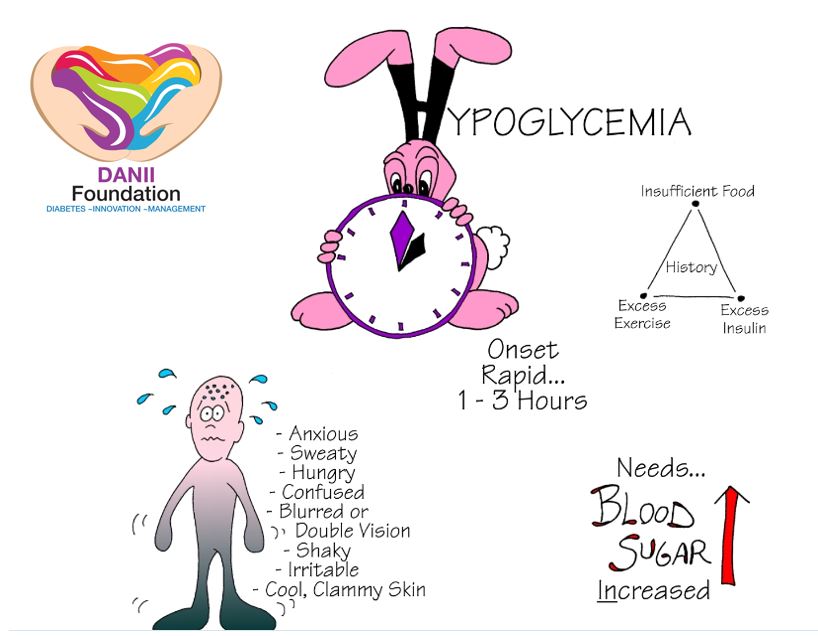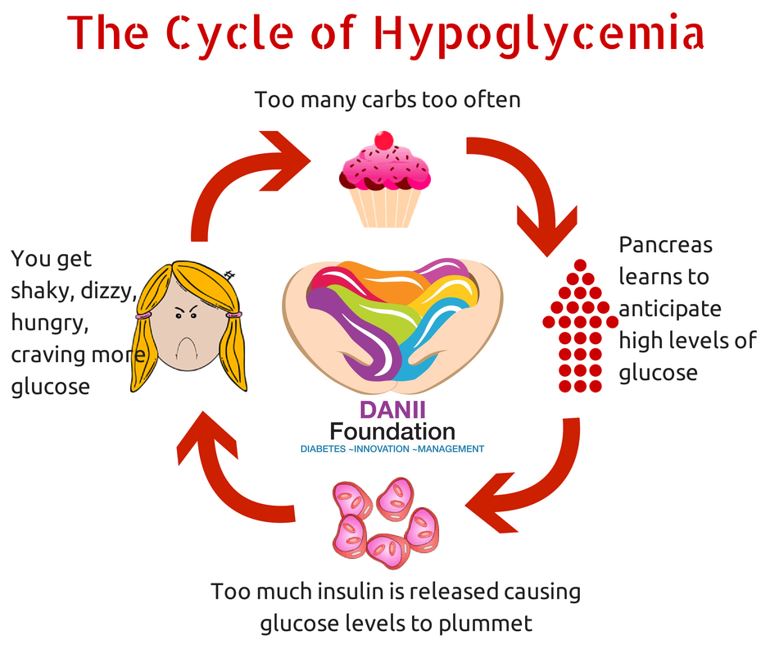
Surviving a Hypoglycemic Episode
Hypoglycemia is the state of low blood sugar and is caused by too much insulin or too little sugar in the body. It is defined as a blood sugar below 70 milligrams per deciliter (mg/dL), or 3.9 millimoles per liter (mmol/L). Untreated, it may result in seizures, unconsciousness and sometimes death.
Experiencing a hypoglycemic, or low blood sugar, episode can be scary—for both those with diabetes and those people around them. Prompt and appropriate treatment of hypoglycemic episodes is critical to avoiding an emergency situation, so make sure you’re always prepared with a fast-acting carbohydrate source, blood testing supplies, and medical identification. And share the information with friends, family, and co-workers so that they know how to help should you be unable to treat yourself.
If you experience any hypoglycemic symptoms, including sweating, lightheadedness, shakiness, confusion, anxiety, unexplained anger, hunger, and fatigue, act quickly to bring your blood sugars back to safe levels.
- anxious feeling
- blurred vision
- confusion
- difficulty in concentrating
- excessive hunger
- headache
- nervousness
- restless sleep
- slurred speech
Here’s how to treat it:It’s important to know that treatment of hypoglycemia depends on the severity of the low blood sugar reading, and whether or not the person having a “hypo” is alert.

1. Take a blood glucose reading. Get help if you don’t think you can operate your glucose monitor. If your blood sugars are less than or equal to 3.9 mmol/l, or if they are below the lower safety limit set by you and your doctor, proceed to step two immediately.
2. Take 15 grams of a fast acting carbohydrate, such as:
- 2 or 3 glucose tablets
- 1/2 cup of Apple juice
- 1/2 cup of a regular (not diet) soft drink
- 5 or 6 pieces of hard candy
- 1 or 2 teaspoons of sugar or honey
- Glucose gel (1 tube) (ideal for people with gastroparesis because delayed absorption)
3. Glucose gel or cake frosting in a tube (see package for measurement) IMPORTANT: If you lose consciousness, no one should attempt to give you food or drink due to the risk of choking and/or aspiration. Instead, you should be given a glucagon injection (if available) and emergency medical personnel should be called to the scene.
4. Sit down and wait fifteen minutes, then test blood glucose levels again. If it is still too low, have another 15 grams of fast acting carbs. Repeat steps one through three until your blood glucose is at least 3.9 mmol/l. It’s important to follow the 15 grams/15 minute rule, as over-treating a low can send your blood sugars on a dangerous roller coaster ride.4
5. If it will be an hour or more before your next meal, have a snack.
If you don’t have a meter to test with and are experiencing hypoglycemic symptoms, err on the side of caution and assume you are low. Always wear medical identification so that in the event you lose consciousness, others will know how to help you. And once the low has passed, think about what may have caused it. Was it too much insulin, a delayed meal, or something else? If you can’t determine the culprit, make a note of the circumstances surrounding lows when they occur and see if you can determine a pattern. Always discuss frequent hypoglycemic episodes with your doctor.
Blood glucose should be checked 15 minutes after treatment, and if blood glucose remains <70 mg/dl, another 15 grams of simple carbohydrates should be given. If you are sick at the time of a low, the number to consider a hypoglycemic event should be higher (about 100 mg/dl.).
If person is unconscious…
Treat with glucagon and call emergency services
- Glucagon (1 milligram) or if person weighs less than 50 kilograms/110 pounds (0.5 milligrams)
What is Glucagon?
Glucagon is a hormone medicine used in emergencies when a diabetic is experiencing hypoglycemia and cannot take sugar orally. It comes in powder form and must be added to a solution in order to administer it. It is the opposite of insulin.
Consult with your endo
Recurrence of hypoglycemia is common, and you should make adjustments to your insulin regimen with your doctor after a hypoglycemic event to avoid more lows. Endocrinologists will review your insulin regimen and adjust basal or corrective bedtime insulin doses if you’re getting lows while sleeping, or bolus and/or correct insulin doses if you have hypoglycemia after meals (postprandial hypoglycemia).
BG spikes after a low
In about 20% of cases, rebound hyperglycemia (or blood sugar spikes) occur after a low. Over-correction with carbohydrates is the main cause of rebound hyperglycemia. It is recommended to give no more than 20 grams of carbohydrate for correction of blood glucose between 50-70 mg/dl and as noted previously, to check BG levels as needed in 15 minute increments, giving 15 grams more of carbs until levels rise.
